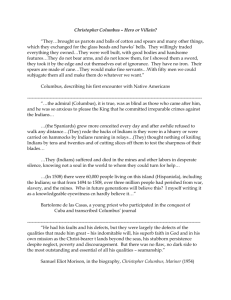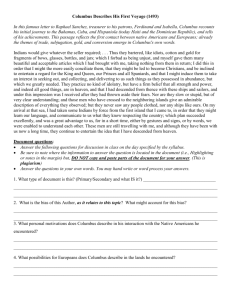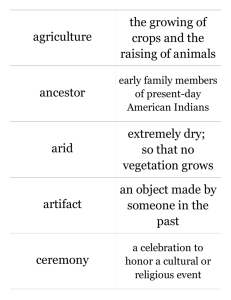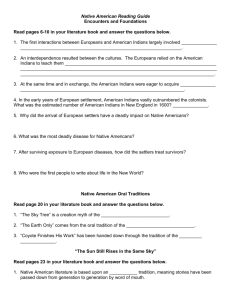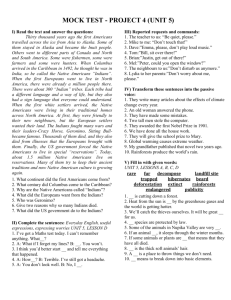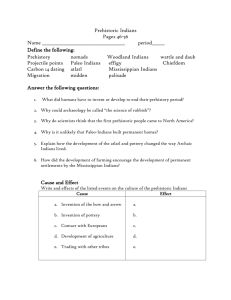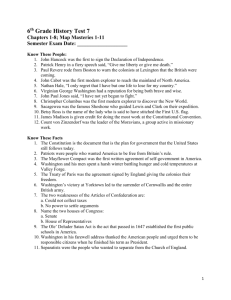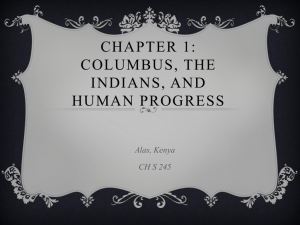Ronald Takaki, *The Tempest in the Wilderness: The Racialization
advertisement
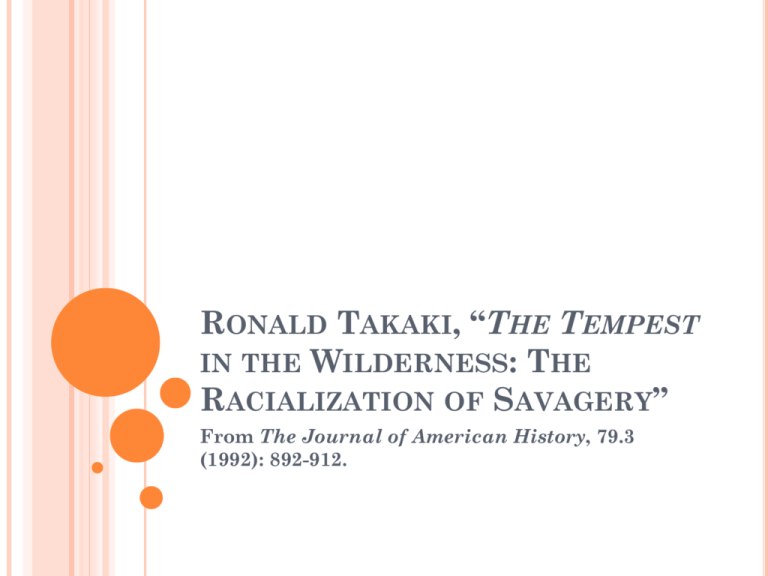
RONALD TAKAKI, “THE TEMPEST IN THE WILDERNESS: THE RACIALIZATION OF SAVAGERY” From The Journal of American History, 79.3 (1992): 892-912. Trinculo: “A strange fish. Were I in England now (as once I was) and had but this fish painted, not a holiday fool there but would give a piece of silver. There would this monster make a man; any strange beast there makes a man. When they will not give a doit to relieve a lame beggar, they will lay out ten to see a dead Indian” (II.ii.26-32). Stephano: “If I can recover him, and keep him tame, and get to Naples with him, he’s a present for any emperor that ever trod on neat’s leather” (II.ii.65-67). “The English had seen or read reports about Indians who had been captured and brought to London. Beginning with Christopher Columbus, European visitors to the New World had brought back Indians. Columbus himself had displayed Indians. During his first voyage, he wrote: ‘Yesterday came [to] the ship a dugout with six young men, and five came on board; these I ordered to be detained and I am bringing them.’ When Columbus was received by the Spanish court after his triumphal return, he presented a collection of things he had brought back, including gold nuggets, parrots in cages, and six Indians. […] When Columbus set sail with his fleet to return to Spain, he took 550 Indian captives with him” (Takaki 896-97). “English explorers also engaged in the practice of kidnapping Indians. When Capt. George Waymouth visited New England in 1605, he lured some Abenakis to his ship; taking three of them hostage, he sailed back to England to display them. An early seventeenth-century pamphlet stated that a voyage to Virginia was expected to bring back its quota of captured Indians. […] In 1611, […] ‘a native of New England called Epenew was brought to England… and ‘being a man of so great a stature’ was showed up and down London for money as a monster’” (897). Gonzalo: “When we were boys, Who would believe that there were mountaineers, Dewlapped like bulls, whose throats had hanging at ‘em Wallets of flesh? Or that there were such men Whose heads stood in their breasts? Which now we find Each putter-out of five for one will bring us Good warrant of” (III.iii.43-49). “The Tempest can be approached as a fascinating tale about the creation of a new society in America. Seen in that light, the play invites us to view English expansion not only as imperialism but also as a defining moment in the making of an English-American identity based on race. For the first time in the English theater, an Indian character was being presented. What did Shakespeare and his audience know about the native peoples of America, and what choices were they making when they characterized Caliban? Although they saw him as a ‘savage,’ did they racialize savagery? Was the play a prologue for America?” (892).
